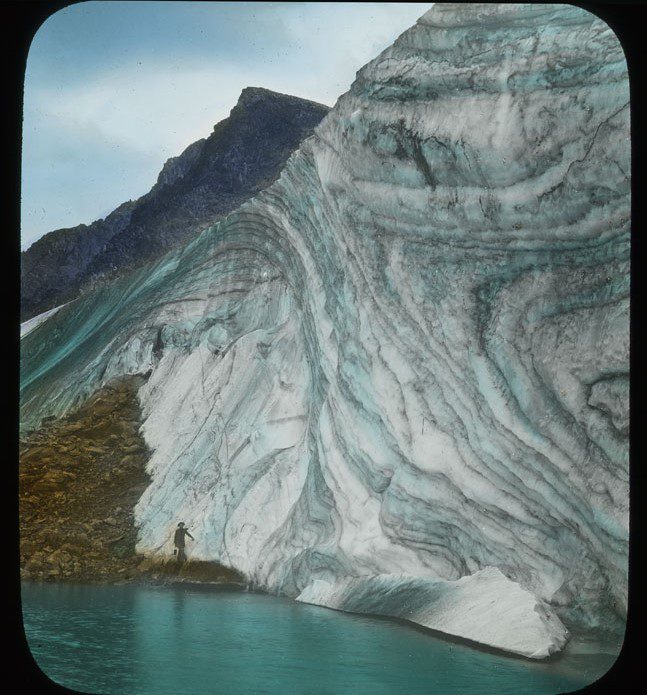Sitting at 3,350 meters (11,000 feet) above sea level is a glacier resembling “the skin of an elephant” – and it’s teeming with the preserved remains of an extinct species. A survey conducted in 1914 conducted by US Geological Survey mining geologist Dr J. P. Kimball led to the finding that gave Grasshopper Glacier its very literal name.
Located in the Beartooth Mountains of Custer National Forest, southwest of Billings, Montana, the Grasshopper Glacier is accessible for just 2 months out of the year. However, those lucky enough to reach the peak might just see the treasures concealed within.
Packed inside the glacier for hundreds – possibly thousands – of years, are millions of perfectly preserved Rocky Mountain locusts. Upon first identification in 1914 by the US Bureau of Entomology, the locusts hadn’t been seen in large numbers since the end of the 19th century, with the last live specimen having been collected in 1902.
Image credit: Grasshopper Glacier 1990 J.E. Haynes. St. Paul, Official Photographer of Yellowstone National Park
While it is unclear what led to the demise of this huge swarm, it’s speculated that they succumbed to extreme weather conditions while flying over the glacier’s frosty peaks. Heavy snowfall and ice sheets preserved them just beneath the surface forever.
That is, until trusty climate change decided to get involved.
In the year of the glacier’s discovery, the icy structure stretched for 8 kilometers (5 miles) – but as global temperatures rose the glacier shrunk rapidly, now spanning just 0.32 kilometers (0.2 miles).
As the ice melts, the preserved specimens are revealed and exposed to the ever-warming weather. Once defrosted, the window for collecting specimens is short. Due to the difficulty reaching the site, many of these precious locusts are never collected, and instead slowly rot atop the glacier.
Before their extinction, the Rocky Maintain locust was known for its vast swarm numbers. The infamous “Albert’s Swarm” of 1875 saw an estimated area of 177 kilometers (110 miles) wide and 2,896 kilometers (1,800 miles) long filled with 12.5 trillion locusts.
Their abundance meant few specimens were ever collected or studied before their extinction, making sites of their preserved remains even more vital for gathering information about this once-thriving species.
Source Link: Grasshopper Glacier Gets Its Name From Millions Of Preserved Extinct Locusts Inside It
